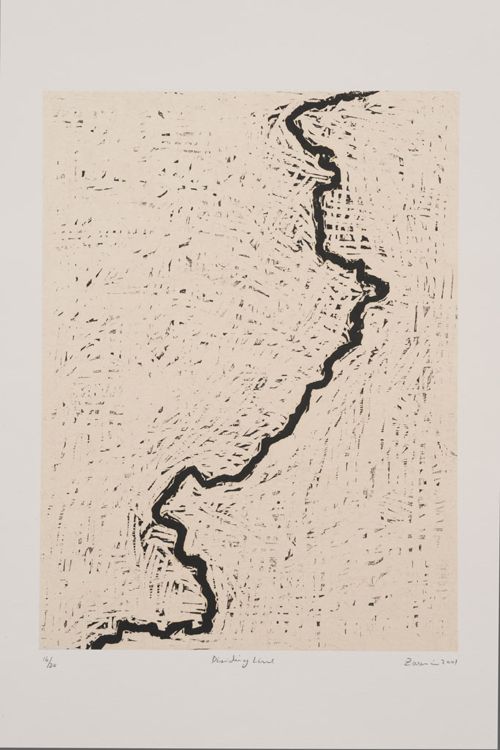Zarina: Paper Like Skin, on view through April 21 at the Guggenheim Museum in New York, is a must-see for those who haven’t experienced her work in person and/or those who have a love for paper that goes beyond its most popular application as ground for things like drawing, painting, and phone bills. Being someone who fits both categories I was thrilled last week to have the museum’s opening hour on a weekday to really sit with this artist’s work and let it sink in. Zarini Hashmi (the artist goes by her first name only) takes paper beyond being a surface for mark making and allows it to serve as a vehicle for sculpture, mapping, poetry, and even meditation.
One of the many works that caught my attention immediately upon entering the show was woodcut called Dividing Line (2001). While I cannot say why, the combination of title and line, cut at a jagged angle across the paper, was almost enough on its own to introduce the idea of borders, specifically in this case between India and Pakistan. So often we teach about gesture as art educators, but gestures that don’t use the human figure as a starting point aren’t valued nearly as much. This was a case where gesture, a line (in woodcut no less), told an entire story. Further into the exhibit Zarina’s mixed-media works that mapped places she had lived and worked over time, also told stories through a specific way of making marks, guiding the viewer through the story behind the gesture.
Zarina’s pin drawings, created by piercing different sheets of paper hundreds of times with a variety of needles, invited me to sit and meditate on the rhythm of lines, shapes, textures, and the context for this series. Back and forth my eyes traveled across the twenty works and occasionally I had to remind myself that I was in fact looking at holes in the paper and not listening to the quiet rhythm of each work being made. Yet I was. I also contemplated the relationship to, perhaps, Oliver Herring’s knitted sculptures and homage to Ethyl Eichelberger.
If you love paper and are interested in an artist that gets plenty of MPG out of her medium, this is for you. If you teach about and with paper, don’t miss it.
